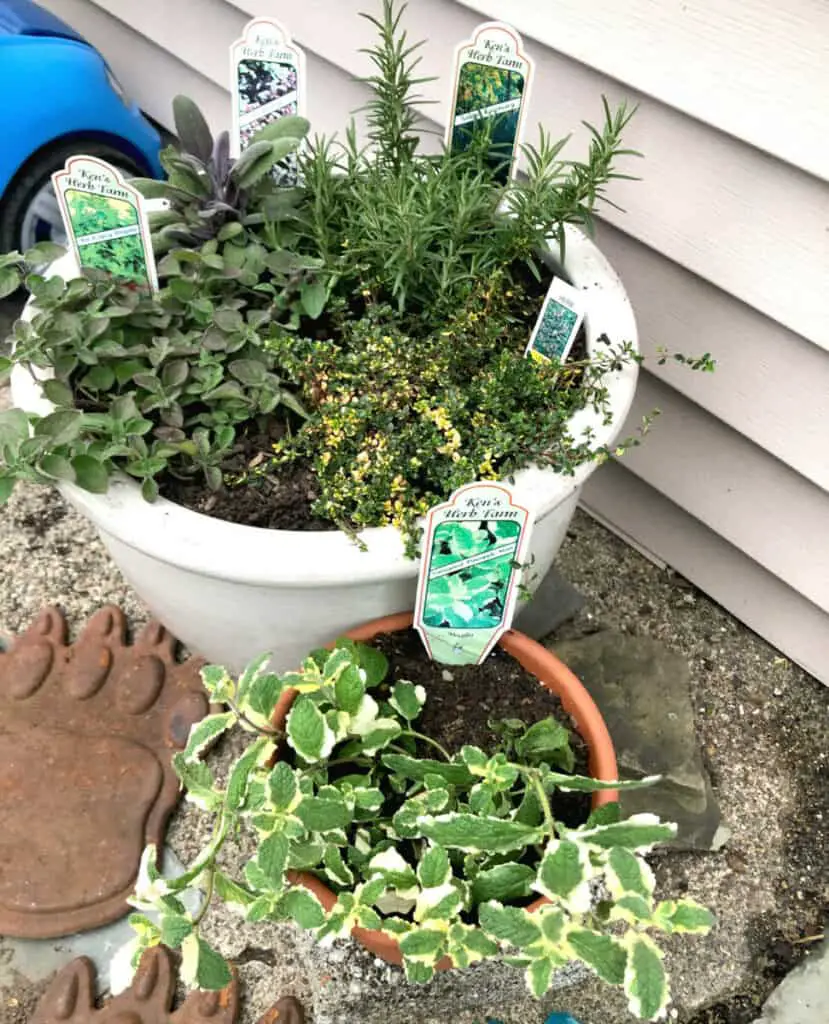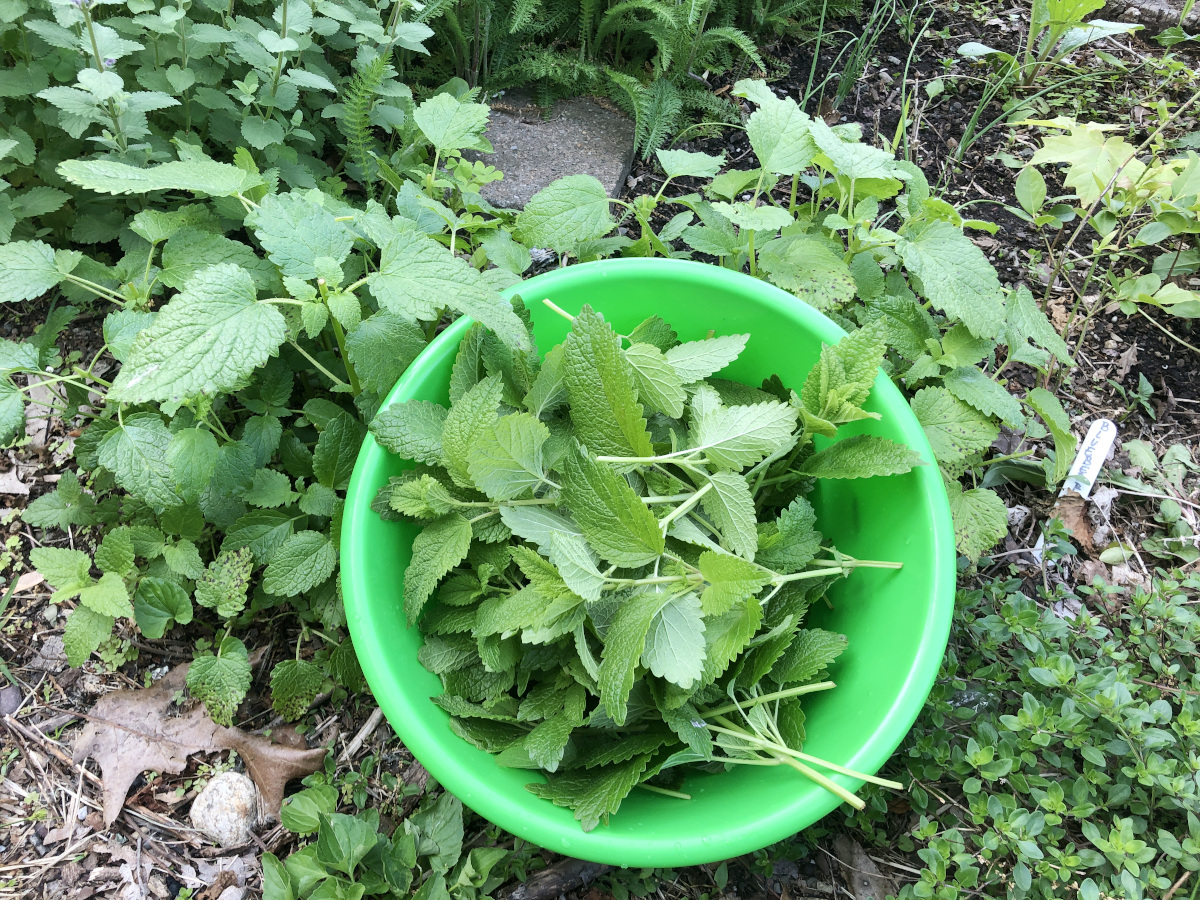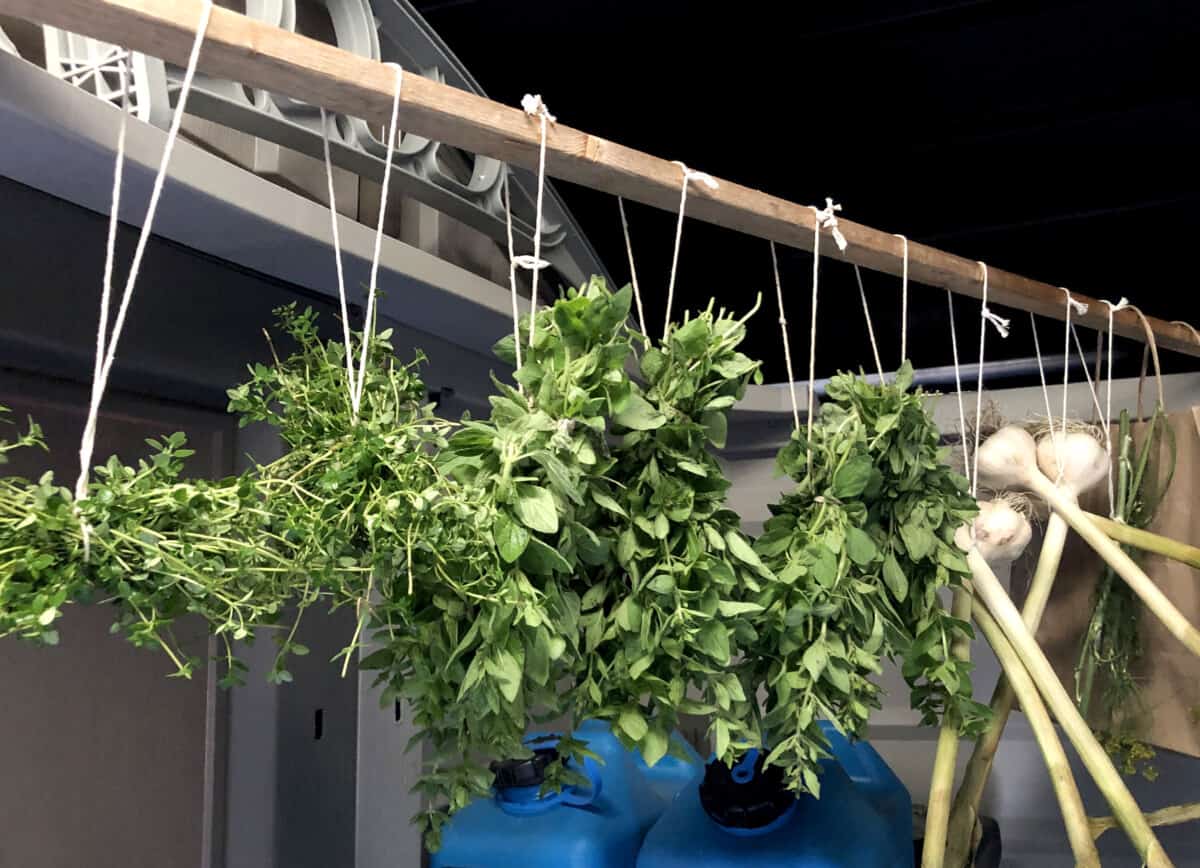Perennial herbs are great for a low-maintenance garden. They do not take much space to grow and mature therefore they are a very good fit for small spaces, containers, and pot gardens.
Perennial herbs like sage, lavender, chives, thyme, oregano, marjoram, rosemary, roman chamomile, tarragon, lemon balm, and mint do come back every year, depending on what hardiness zone you grow them. Perennial herbs are herbs that are hard for your growing zone. You plant them once, they are able to survive winter in your area and do come back every year. Before you plant an herb in your garden, do check if that herb is a perennial in your area.

I have written an extensive article about What do hardiness zones mean and how to determine yours, which will help you find out in what hardiness zone you grow your garden in order to see what herbs are perennial in your zone.
I grow in hardiness zone 6 and I yet wish to find a rosemary plant that would survive winter in my garden. Every year I plant rosemary which fragrance and flavor I enjoy so much, but every winter kills it. If you grow in zone 6 and colder, and you have rosemary still growing in your garden after winter, please be so kind to share with me in the comments what variety it is. I will greatly appreciate it! Rosemary is hardy and a perennial herb for zones 7-10. I have read online that it is not uncommon for rosemary to survive zone 6 winters, but have never seen one come back to life after winter in my garden.
What is a perennial herb?
A perennial herb is an herb you plant once, they are able to survive winters in your hardiness zone, and do come back year after year. They do not need to be replanted or resowed, and they do not need to be kept indoors during winter in your hardiness zone. They are hardy enough to overwinter themselves and regrow again in spring from an underground root system.
How can I use perennial herbs?
Perennial herbs can be used to eat fresh as a garnish and to infuse meals with flavor and aroma. They can be used for cooking, or to infuse vinegar or honey. They are also used for medicinal purposes and in cosmetics.
How to propagate perennial herbs
Some perennial plants can self-seed themselves, others can be divided by the roots or propagated by the cuttings.

Do perennial herbs attract pollinators?
Yes, perennial herbs do attract pollinators. Perennial herbs do bloom and attract beneficial pollinators into the garden. They are not only edible but also ornamental.

Do perennial herbs deter pests?
Perennial herbs do deter pests. Because perennial herbs are fragrant or with a pungent flavor, they usually do not attract garden pests. Some perennial herbs even help to keep the pests out and away. Some herbs are also used to make bug repellants.
Perennial herbs that can repel pests are mint, lavender, chives, and rosemary.
Can I include perennial herbs in a medicinal garden?
Many perennial herbs are grown for their medical or beautifying properties and are added to salves, tea, syrups, tinctures, and remedies. They can be also used in cosmetics. There is a vast number of perennial herbs.
Besides perennial herbs, there are many biennial and annual herbs that can be combined in an herb garden with perennial herbs. They can be also combined in cooking and for medicinal purposes.
Biennial herbs go through a two-year life cycle. You will have them growing in your garden for two seasons. They are sowed and established in the first year. In the second year, they bloom and go to seed. Then they die off and need to be sowed again.
Annual herbs go through one growing cycle. They are sowed, they grow, bloom, go to seed, and die off all in one life cycle. They can be sowed multiple times through the growing season for continuous harvest. They are frost-tender, and the frost and cold of the winter season kill them. Some are able to complete their life cycle before the winter season when grow, go to seed, dry off, and die. Most of the annual herbs are able to reseed themselves and overwinter seeds in the ground and you might find them growing again from seed in your herbal garden. Dill and cilantro can reseed themselves well. It is also relatively easy to save seeds from annual herbs. I would like to encourage you to collect the seeds from the annual herbs you grow.
How to collect seeds from herbs
After the herbs flower, the next stage in their growing cycle is to go to seed. Once you see the flowers or seed pods dry off, seeds are perfectly fine to be collected and saved for the next sowing season. Keep them in a dry, dark place and have them ready to sow them.
I use to use the seeds off of my dill and cilantro the same season they go to seed and die off. As soon as I have the new seeds from the old plant, I sow them in the ground and have new herbs in the same season.
How to harvest perennial herbs
Harvest the outer leaves of the plant by clipping or cutting. Tips of the mature stalks can be clipped off as well. Some herbs can be harvested with the stalks with all the leaves attached and then tied into bundles.

How to preserve and store perennial herbs
Herbs are one of the easiest crops to preserve. There are several ways to preserve herbs. One of the ways to preserve them is to dry or dehydrate them. Simply harvest the herbs in bunches and tied them up. Then hang them in a dark and dry space upside-down and let them dry. Herbs can be dehydrated in a food dehydrator or in an oven run at a very low temperature. Once the herbs are completely dry and crumbly texture, they can be preserved in seal-tight plastic or glass jars. Another way to preserve herbs is to freeze them. Chop fresh herbs, then fill the ice trays with your chopped herbs and pour olive oil over them. Once frozen in the olive oil, take them out of the ice tray and place them in a zip-lock bag and keep them in the freezer.

What herbs do not come back next year?

